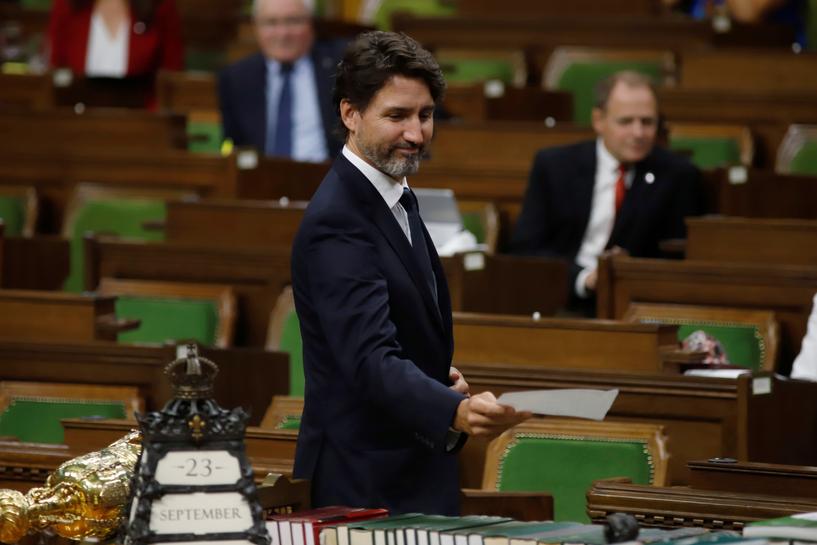Canada Bets The Farm On Big Spending as Second Wave Threatens Economic Recovery

Canada’s vow to double down on pandemic-related spending to keep the economic recovery under way in the face of a second wave of COVID-19 infections will support activity but raises questions over the burgeoning deficit, economists say
The Liberal government on Wednesday made sweeping promises of major new investments and policy initiatives saying “this is not the time for austerity”, while giving few details on how those plans would be financed and at what cost.
An economic update, including fiscal projections, will be released later this fall, it said.
“It seems like they’ve bet the farm and doubled down on spending,” said Ian Lee, associate professor of management at Ottawa’s Carleton University. “The commitments certainly suggest that the budget deficit is going to become much larger.”
“If we don’t survive the short term, there is no sense worrying about the medium to longer term. It’s all hands on deck”
In a rare national address, Prime Minister Justin Trudeau said Canada has entered a second wave of the coronavirus pandemic and warned the country was on the brink of a surge in cases if people did not follow public health guidelines.
The government has already spent billions on pandemic aid, pushing this fiscal year’s forecast deficit to C$343.2 billion ($256.5 billion), which at about 16% of GDP is the largest shortfall since World War Two.
New measures since then will likely tack another C$30 billion onto that, while next fiscal year’s deficit could be around C$200 billion, Doug Porter, chief economist at BMO Capital Markets, said in a note on Wednesday.
“Massive support programs currently underway won’t fully roll off next year and, even as some do, there will be more spending to fill some of the void,” Porter said in the note.
ALL HANDS ON DECK
The so-called Speech from the Throne included the big-ticket pledges of a national prescription drug plan and universal childcare. But economists say some of these programs could be more aspirational than immediate as Ottawa keeps some powder dry to fight the pandemic.
“If we don’t survive the short term, there is no sense worrying about the medium to longer term. It’s all hands on deck,” said Craig Wright, chief economist at Royal Bank of Canada.
Still, an “activist approach to fiscal policy” could bolster the economy, leading to stronger-than-expected GDP growth in 2021 and 2022, said Stephen Brown, chief Canada economist at Capital Economics in a note.
While supporting the economy is seen as a priority in the short-term, economists look for the fall fiscal update to provide some indication of when debt will peak.
“All deficits are not created equal,” said Royce Mendes, senior economist at CIBC Capital Markets. “When you’re in such a deep hole and you’re facing a pandemic head-on, most Canadians seem to be alright with spending.”
“Where you start to get broader disagreement is: what happens when the economy has healed? Will these initiatives transition into structural deficits and that’s where you really have a lot of concern,” Mendes said.
For Carleton’s Lee, the spectre of a shift from emergency measures to a larger structural deficit is very real and something he fears markets will not take lightly.
“What this throne speech is signaling is that this is not going to be temporary. They are transforming the temporary deficit into a structural permanent deficit,” he said.












